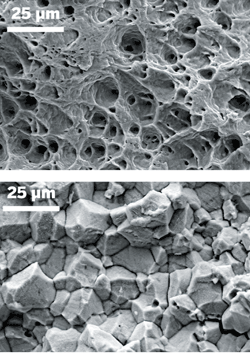I have blogged a lot about the aging U.S. nuclear power reactors. Most of them were built decades ago and are nearing or have already passed their initial forty year licenses. There does not seem to be much interest among investors and utilities in building new nuclear power reactors. The U.S. has a guaranteed loan pool of about twenty billion dollars that was created seven years ago. Since creation, the fund has only found one power company interested in building two new reactors at the Vogtle nuclear power plant in Georgia. This company got an eight billion dollar loan. There is still over twelve billion in the fund but, for the moment, no other takers.
With lack of interesting in building new reactors, the nuclear power industry in the United States is working on extending the lifespan of the current nuclear power reactors. The owners of seven old power reactors in Pennsylvania, Virginia and South Carolina are going to ask the U.S. government for permission to extend the lifespan of their reactors to eighty years, twice the original licensed lifespan. They claim that it will be more economical to keep the old reactors going rather than build more new reactors. Critics of the plan say that many of the reactors were built on designs that were decades older than the reactors. They point out that it may be difficult to keep the old reactors going as long as eighty years.
After decades of exposure to radiation, some metal reactor parts become brittle and are more likely to crack when subjected to stress. One big concern is that some of the piping in the cooling system of a reactor could crack and leak which might trigger the emergency cooling system to dump large amounts of water into the reactor. The reactor could keep operating but the temperature drop could induce what is called "pressurized thermal shock." This could crack open the reactor containment vessel and release radioactive materials into the environment.
Supporters of extending the lifespan of these old reactors say that they will carefully monitor the steel, concrete, cable insulation as well as other critical components. Small pieces of metal called "coupons" are kept inside the reactor and removed one at a time to check for brittleness. Unfortunately, some of the reactors have run out of coupons and their operators are trying to figure out another way to check for brittleness. In other cases, the operators have placed coupons closer to the reactor core to "age them faster."
The consensus of the Nuclear Regulator Commissioners and the nuclear power industry is that these old reactors can continue to operate for decades more with adequate monitoring. Currently, the owners of many old reactors have filed for and been granted twenty year extensions of their forty year licenses. No requests have been denied but some requests are still under review. There is a new push for another round of twenty year extensions which would bring the licensed life of a reactor to eighty years.
My big concern is that the nuclear industry has a poor record of adhering to regulations on nuclear safety and the Nuclear Regulatory Commission has a very poor record of monitoring and enforcing such adherence. As the U.S. power reactors age, the odds of a nasty accident increase. Extending reactors life spans to eighty years is a very bad idea.
Microscopic images of samples of stainless steel. The top sample shows steel with its normal integrity. The bottom image shows steel that has been made brittle by exposure to radiation.
